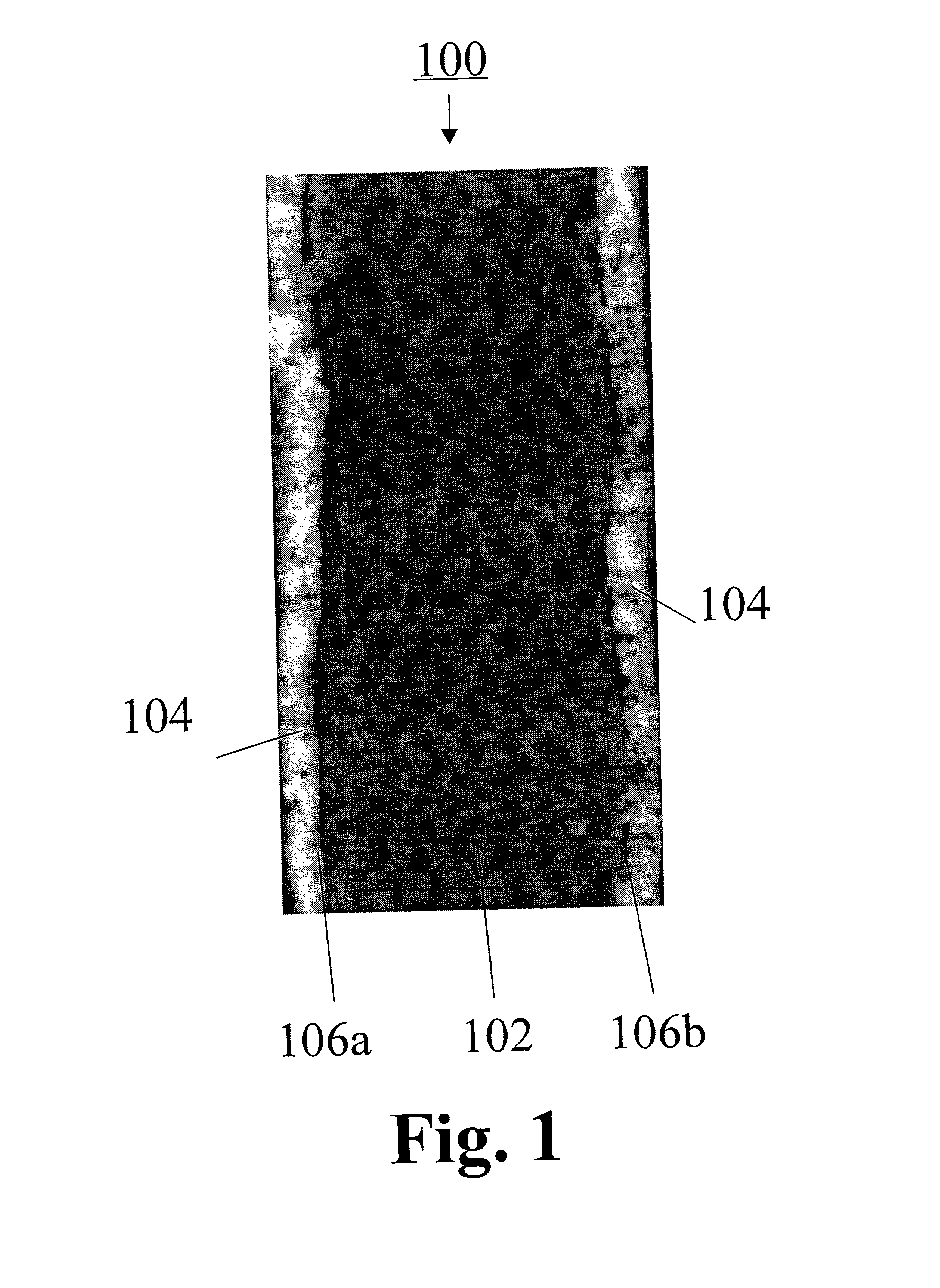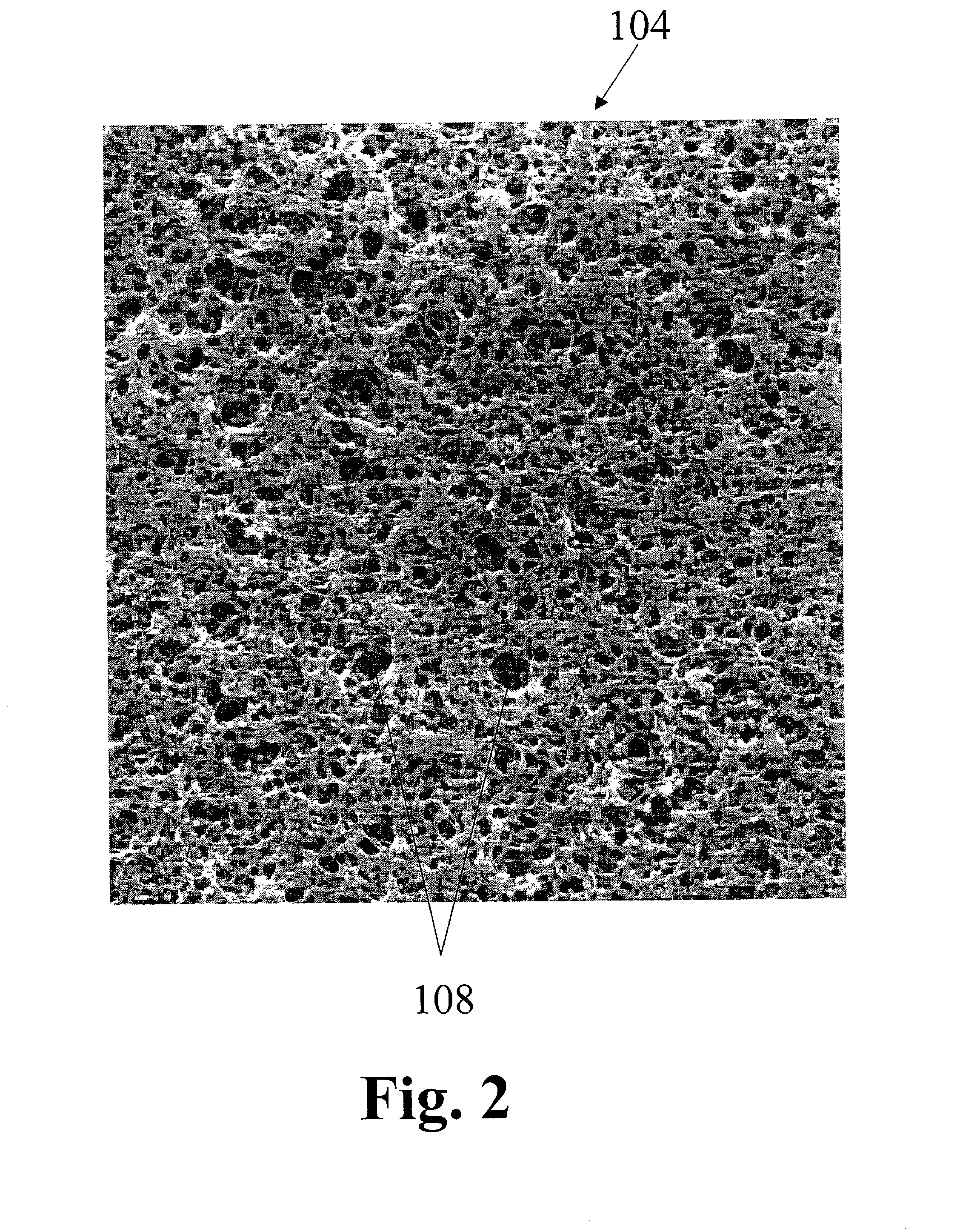Freestanding microporous separator including a gel-forming polymer
a freestanding, microporous polyolefin technology, applied in the direction of cell electrodes, electrical equipment, cell components, etc., can solve the problems of poor mechanical integrity, inability to fully shutdown, and limited battery manufacturer's options in shape and size, so as to reduce cycle time and resistivity, the effect of increasing wettability
- Summary
- Abstract
- Description
- Claims
- Application Information
AI Technical Summary
Benefits of technology
Problems solved by technology
Method used
Image
Examples
example 2
[0041] The process described in Example 1 was repeated using PVDF solutions with concentrations of 4.0, 5.0, 5.25, and 5.5% w / v PVDF. A 21-micrometer thick Teklon.RTM. UHMWPE microporous web was coated at a line speed of 198 cm / min with each PVDF solution. The following table summarizes the final thickness, PVDF coat weight, and Gurley value for the PVDF-coated separators as a function of PVDF solution concentration.
2TABLE II A Tabular Summary of Various Physical Properties of the PVDF-Coated Separator of the Present Invention as a Function of PVDF Solution Concentration. PVDF Solution Concentration 4.0 5.0 5.25 5.5 (% w / v) Thickness (micrometers) 21.3 24.9 26.1 27.9 PVDF Coat wt. (mg / cm.sup.2) 0.31 0.53 0.66 0.70 Gurley Value (s / 10 cc air) 57.9 60.0 58.9 85.2
[0042] The porosity of the microporous PVDF layer and the microporous nature of the UHMWPE web facilitate the formation of a hybrid electrolyte system. FIGS. 4a and 4b are cross-sectional schematic diagrams of two hybrid electr...
first embodiment
[0045] In an alternative implementation of the first embodiment, a gel-forming polymer material that forms a nonporous coating is applied to UHMWPE web 102 in a pattern, leaving surface pores accessible to the electrolyte. This alternative implementation is depicted in FIGS. 5a and 5b, which are, respectively, cross-sectional and plan views of a battery separator 122 according to the alternative implementation. As shown in FIGS. 5a and 5b, microporous UHMWPE web 102 contains web pores 112, which are filled with electrolyte. A nonporous coating 124 is placed on UHMWPE web 102 in a pattern to achieve a separator with overall porosity.
[0046] The following example describes the construction of the separator in accordance with the alternative implementation of the present invention.
example 3
[0047] A poly(ethylene-acrylic acid) (EAA) copolymer emulsion (20 g; Adcote.TM. 50T4990; Morton Adhesives) was mixed with deionized water (10 g) and isopropanol (10 g) in a beaker to form a homogeneous coating solution. The coating solution was poured into a glass jar and attached to an air brush (Badger Model #350) with the inlet air pressure set at 20 psi.
[0048] A plastic grid with square holes spaced approximately 2 mm apart was placed on the top surface of an 18-micrometer thick UHMWPE web (Teklon.RTM.; Entek Membranes LLC, Lebanon, Oreg.). The coating solution was sprayed onto the web through the plastic grid from a distance of approximately 17 cm at a coverage speed of 30 cm / sec with the spray nozzle at the maximum setting. The coated web was then placed in a circulating oven for approximately 20 sec at 110.degree. C. to evaporate the solvent mixture. Three iterations of coating and drying were performed, and then the web was inverted and the coating solution was applied to th...
PUM
 Login to View More
Login to View More Abstract
Description
Claims
Application Information
 Login to View More
Login to View More - R&D
- Intellectual Property
- Life Sciences
- Materials
- Tech Scout
- Unparalleled Data Quality
- Higher Quality Content
- 60% Fewer Hallucinations
Browse by: Latest US Patents, China's latest patents, Technical Efficacy Thesaurus, Application Domain, Technology Topic, Popular Technical Reports.
© 2025 PatSnap. All rights reserved.Legal|Privacy policy|Modern Slavery Act Transparency Statement|Sitemap|About US| Contact US: help@patsnap.com



